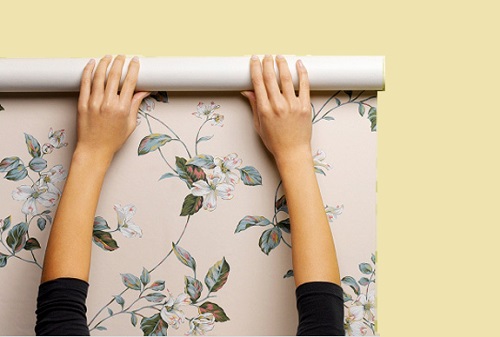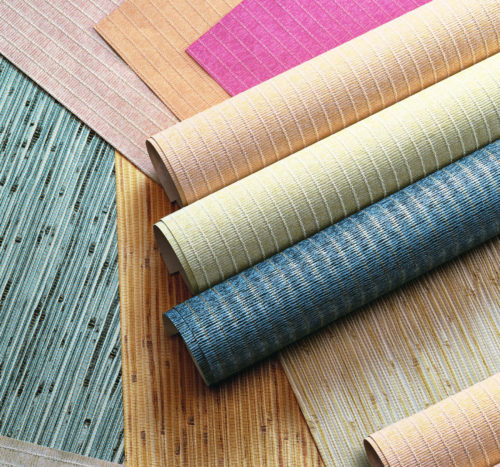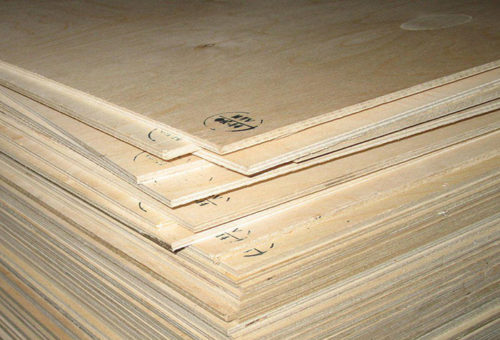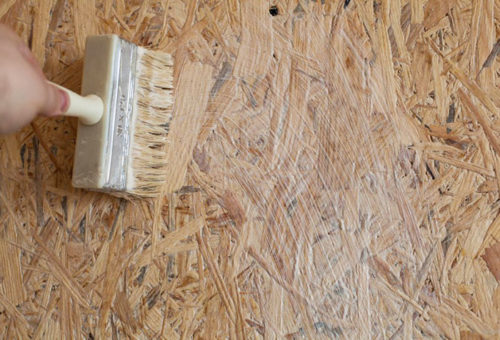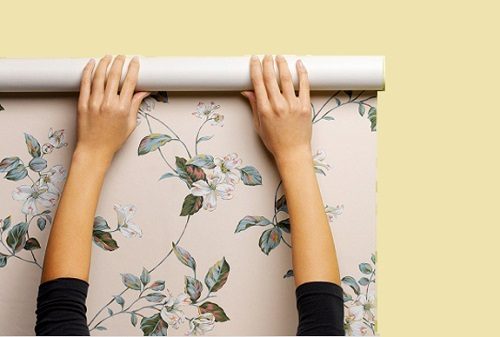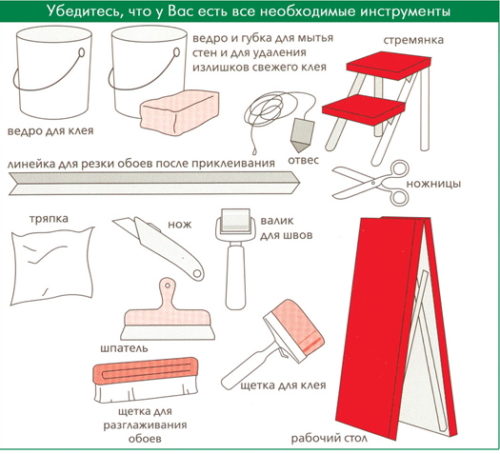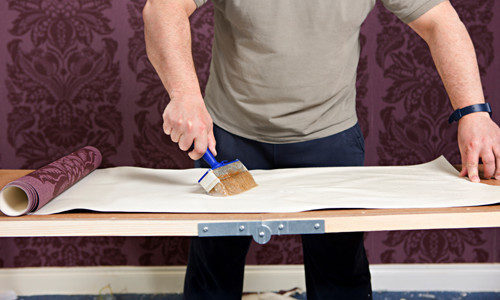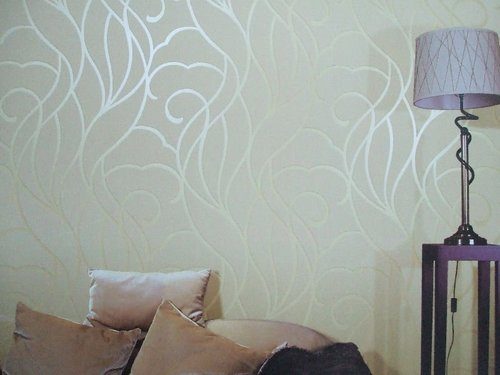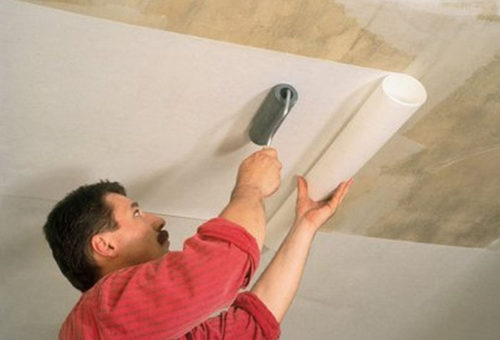Plywood is one of the most popular finishing materials. It is especially used to finish the walls of frame houses. Due to the fact that plywood is available in standard sheets, it is easy to mount, the walls are obtained smoother. Most often, the wall of this material is painted or covered with wallpaper. Unlike the plastered walls, sticking the wallpaper on top of the plywood sheet has its own characteristics. On how to stick wallpaper on Faneru - further in the article.
Content
Features of the base of plywood
Fanoire is often used not as an independent coating for walls, but as a repair material, which can be sealing the wall defects. Thanks to the plywood, you can get the perfect surface to which wallpaper just glue. In some cases, when this material is used to finish the entire room, it is left "as is". Plywood has a rather attractive appearance. If you open it with varnish, the walls will look amazing. In order to answer the question whether it is possible to stick wallpaper on Faneru, you need to know all the properties of this material.
Wooden veneer is used material for the manufacture of plywood. Due to this, the outer side of the sheet has a natural wood texture, which makes it an excellent solution for finishing any room. Since the plywood sheet consists of several layers, it is quite strong, but at the same time elastic. It is easy to work with him, it will be perfectly cut, and due to relatively light weight and small dimensions, its installation can be carried out independently without assistance, which reduces repair costs. Unlike other similar materials, such as drywall, plywood has excellent noise and thermal insulation characteristics. That is why it is often used to erect interroom partitions. Another advantage of plywood is its price, which in comparison with other finishing materials is slightly lower.
Mix three varieties of plywood:
- Construction. The cheapest material. Used in general construction work. Its surface is not processed carefully, therefore, as a rule, such plywood is used only as a base for further finishing. It is glued on it or plastic, or MDF panels. This type of plywood is not distinguished by water-repellent properties, so it needs to protect moisture.
- Laminated. The sheet of such plywood on one side makes laminated, which improves not only performance characteristics, but also the appearance of the material. It better tolerate temperature and humidity drops. Laminated plywood can be used as a final finish, which reduces the time of repair and cost, although the price of the material in comparison with the construction plywood is higher.
- FC and FSF. The sheets of this material are characterized by increased moisture resistance. Last species This indicator is the highest. Such material can be used for external work.
The most commonly used rocks of the tree in the production of plywood are:
- Coniferous rocks. Due to the resin content in the wood of coniferous rocks, such plywood is resistant to the appearance of fungus, rot. Therefore, it is advisable to apply it to finishing premises with high humidity.
- Larch. It is characterized by hardness, therefore it is often used in the construction of interconnect partitions.
- Birch. The most commonly used wood for the production of plywood. It has about the same qualities as larch.
- Combined materials. Produced from different wood species, which much improves their operational characteristics. At the same time, the price of such material is competitive.
Problems when sticking wallpapers on Fan
With the seeming simplicity of the task, putting the wallpaper on the surface of the wall, trimmed by plywood, can prevent several surprises to which you need to be prepared. The most common of them is irregular junctions. Unfortunately, the ideal sheets of plywood are difficult to choose, so there will be a differential or a small slot at the junction of two pieces of material. When sticking wallpaper, this defect will surely come out. Also a large role in this issue can play the irregularities of the trimmed walls.
You can deal with this phenomenon in several steps:
- It is necessary to equalize the walls in front of the trim. If it is impossible to do with minimal cost, it is better to sow wall with a mounted molding metal frame setting. The frame must be mounted in such a way that the joke comes from the profile. Then the sheets will not "walk" with height differences.
- If you still failed to avoid irregularities, old kind putty will come to the rescue. On irregularities, there are special fiberglass tape (sulfyan), which will improve the adhesion of putty with a smooth surface of plywood. Then the irregularity is covered and grind after the solution is dry.
Such simple methods can be achieved by almost the perfect surface of the walls, so that the shocking of the wallpaper becomes a simple occupation.
What wallpaper is best used when sticking on Faneru
For such work, wallpaper should be as close as possible. Paper wallpapers, although they stand much lower than the others, are not quite suitable for sticking on Phaneur. They do not have sufficient strength to hide surface defects. Plywood has a property to change its geometry when changing humidity indoors. When expanding and compressing, thin paper wallpaper can simply break. Even if they remain entirely, defects will be more than noticeable. That is why it is possible and not to think about how to stick paper wallpapers on Phaneur.
The most suitable option for such work is vinyl or phlizelin wallpaper. They have sufficient density to hide defects, are not afraid of contaminants, serve quite a long time.
Another option for sticking on Faneru is fiberglass wallpaper. Big density, high service life, and, most importantly, fire safety, which is very important when working with the base of wood.
Recently, liquid wallpapers have been greatly popular. They are perfectly applied to the surface of plywood, serve for a long time, without losing the original appearance. Damaged sections of wallpaper can simply close up a new portion of the material. However, when using liquid wallpapers, the base should be mounted from moisture-resistant plywood.
How exactly paste the wallpaper on the wall of plywood. Main steps
Wallpaper sticking on any surface - the process is quite difficult, and with such a capricious material, like plywood, and suppressed. The fact is that it does not like moisture, and water is the main solvent for most adhesives. All work can be divided into several stages:
- Preparation of the surface. The most important stage. If you do not prepare the basis of plywood, then over time it may come into disrepair, which will cause peeling and damage to wallpaper. First of all - the material must be protected from moisture exposure. The sheets of construction plywood need to soak the oil and paint. For painting it is necessary to use alkyd enamels that do not contain moisture. It is impossible to use water-emulsion colors for obvious reasons. If a waterproof FC or FSF plywood was used to cover the wall, then moisture-proof activities can be skipped and proceeded to the primer. The laminated surface is not necessary. It is enough to wipe with a dry cloth to remove dust particles and construction trash.
- Next, if necessary, putty is applied to the surface of plywood. It is done in order to get rid of irregularities. After the surface is aligned, the putty is watched and rejected again. When sticking wallpapers on Faneur, it is necessary to protect the fastening material from corrosion. Heads of nails or self-tapping screws, or shut off with putty.
- Preparation of glue. The glue is selected depending on the type of wallpaper, with which you have to work. Each package with powder is written a consistency that is necessary for a specific type of wallpaper. So for heavy vinyl or flieslinic cloths, glue should be as thick as possible. Otherwise, they may simply lag behind. It is not worth saving on the glue, because you can spoil all the work. Before use, it is necessary to check the shelf's shelf life. Not a fresh mixture can cause bad result. The glue is stirred on water using a mixer (nozzle inserted into a drill or puncher). Water constantly interferes in the container in which the mixture is gradually added. After that, the adhesive give 30 minutes to stand and swell.
- Now you can stick the wallpaper in the bedroom. During work in the room there should be no draft. For better setting of wallpaper with the surface, it is necessary to miss the wall, and the strip. To start working on the surface of plywood, you need to apply a start line. It is from her to glue the wallpapers. For applying, the level and pencil is used.
The process of sticking does not work much difficulty. For it, a rubber roller is used. The strip is glued from top to bottom, roll over it with a roller from cents to the edges, top down. Movement of the roller must resemble a Christmas tree. Roll wallpapers need carefully to get rid of the air. If you do not succeed, the strip is torn off and lean over. Wallpapers are glued with an inch. It often happens that after drying the wallpaper, the joints are slightly behind. There is nothing terrible in it, they are simply missing again with glue and rolling with roller again. Saving wallpapers will be about a day. At this time, the window in the room must be closed.

